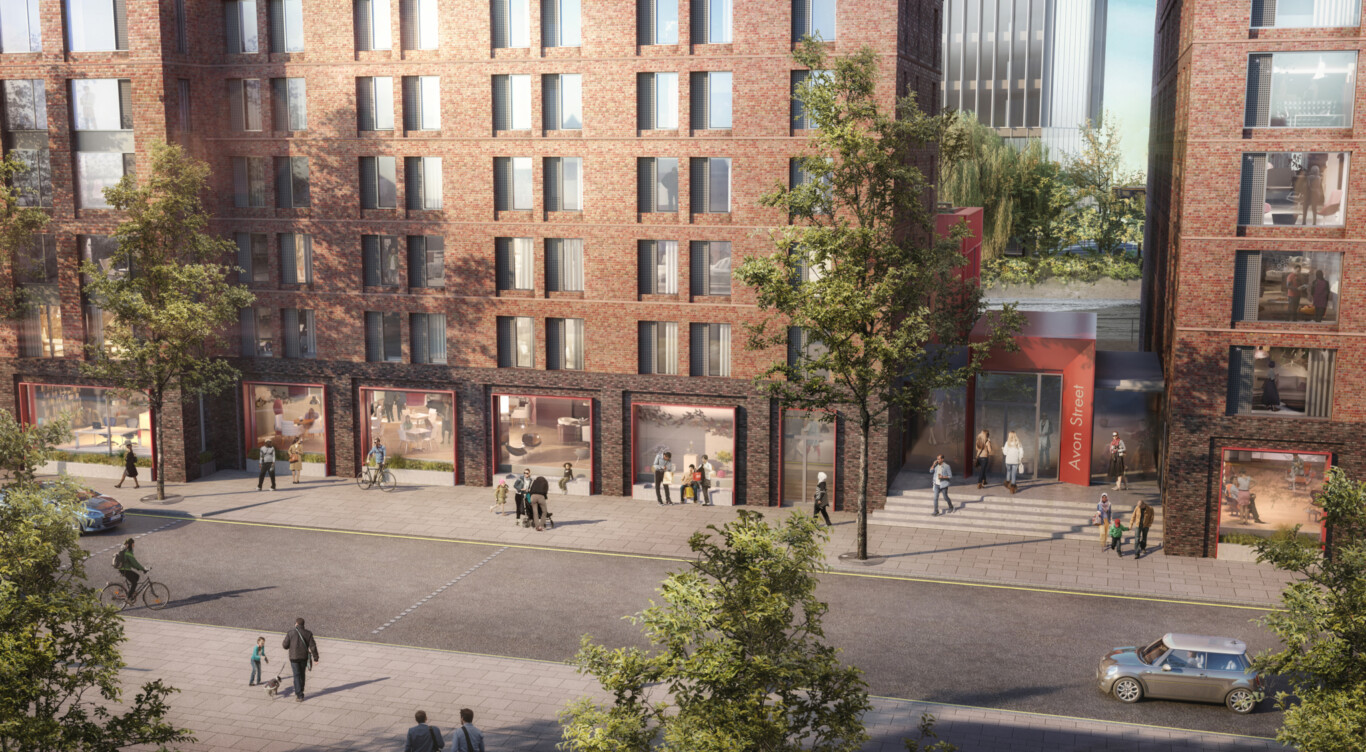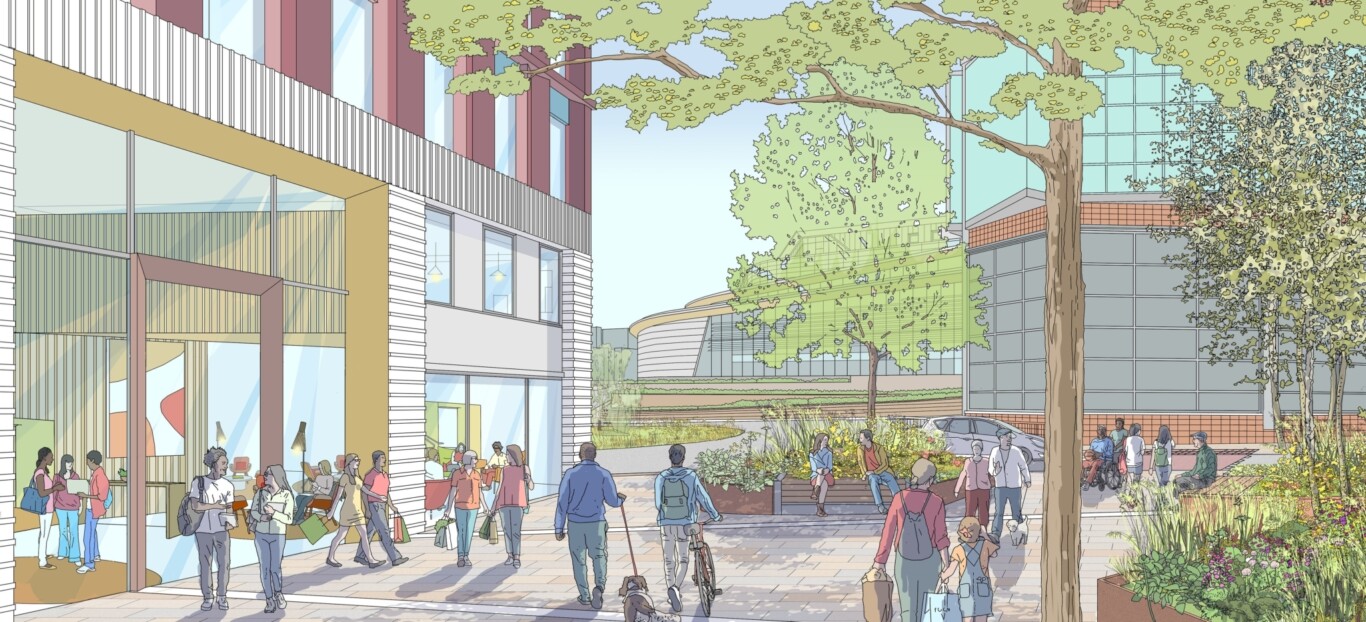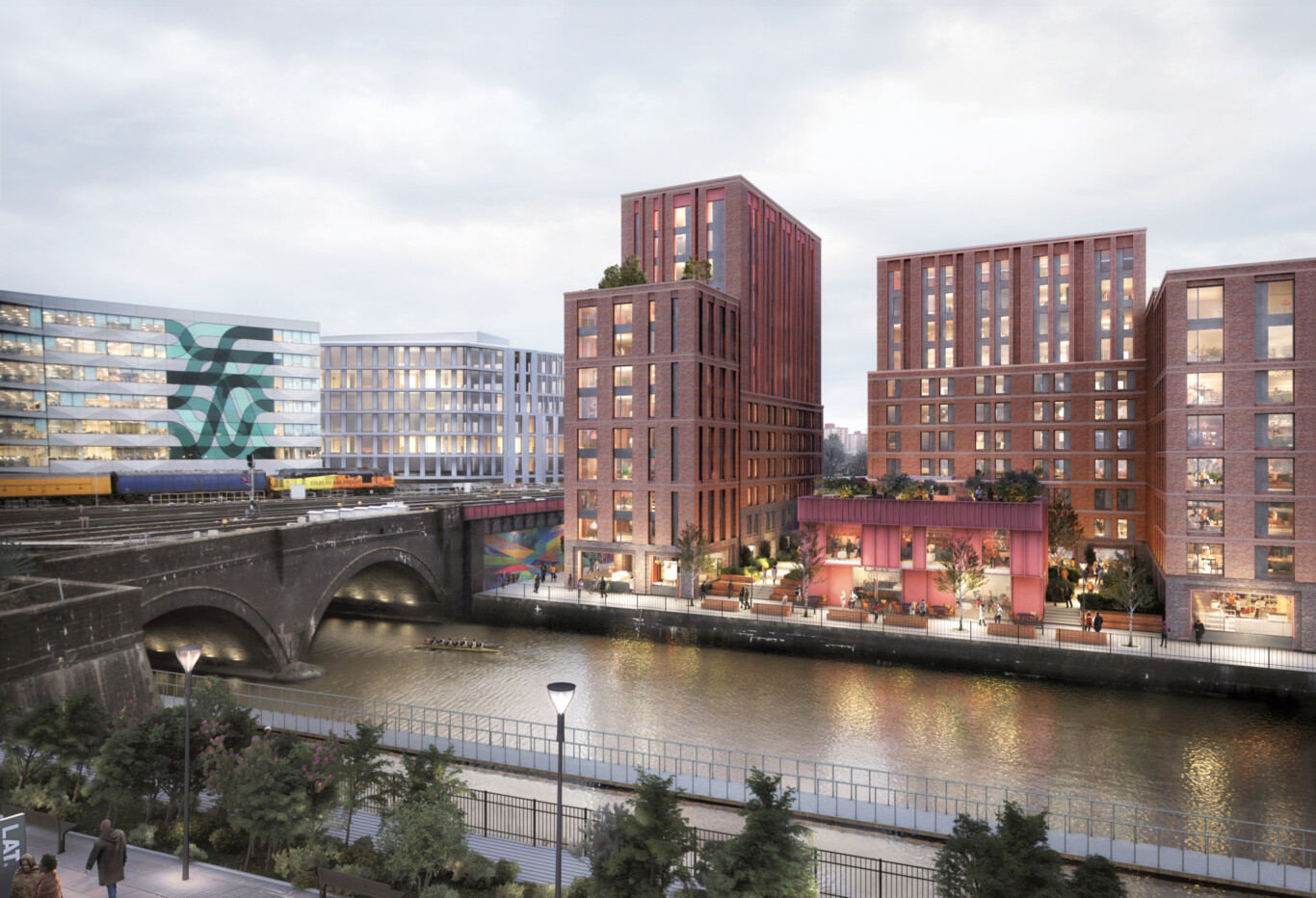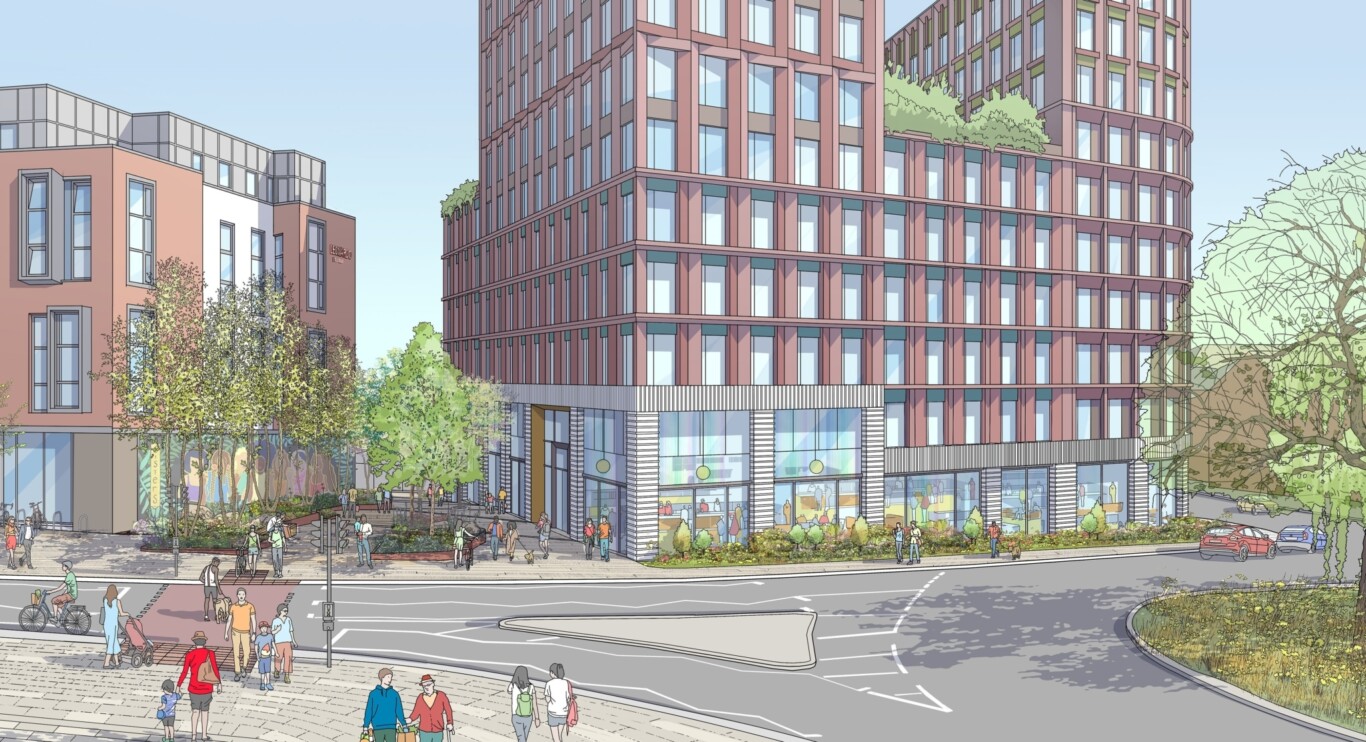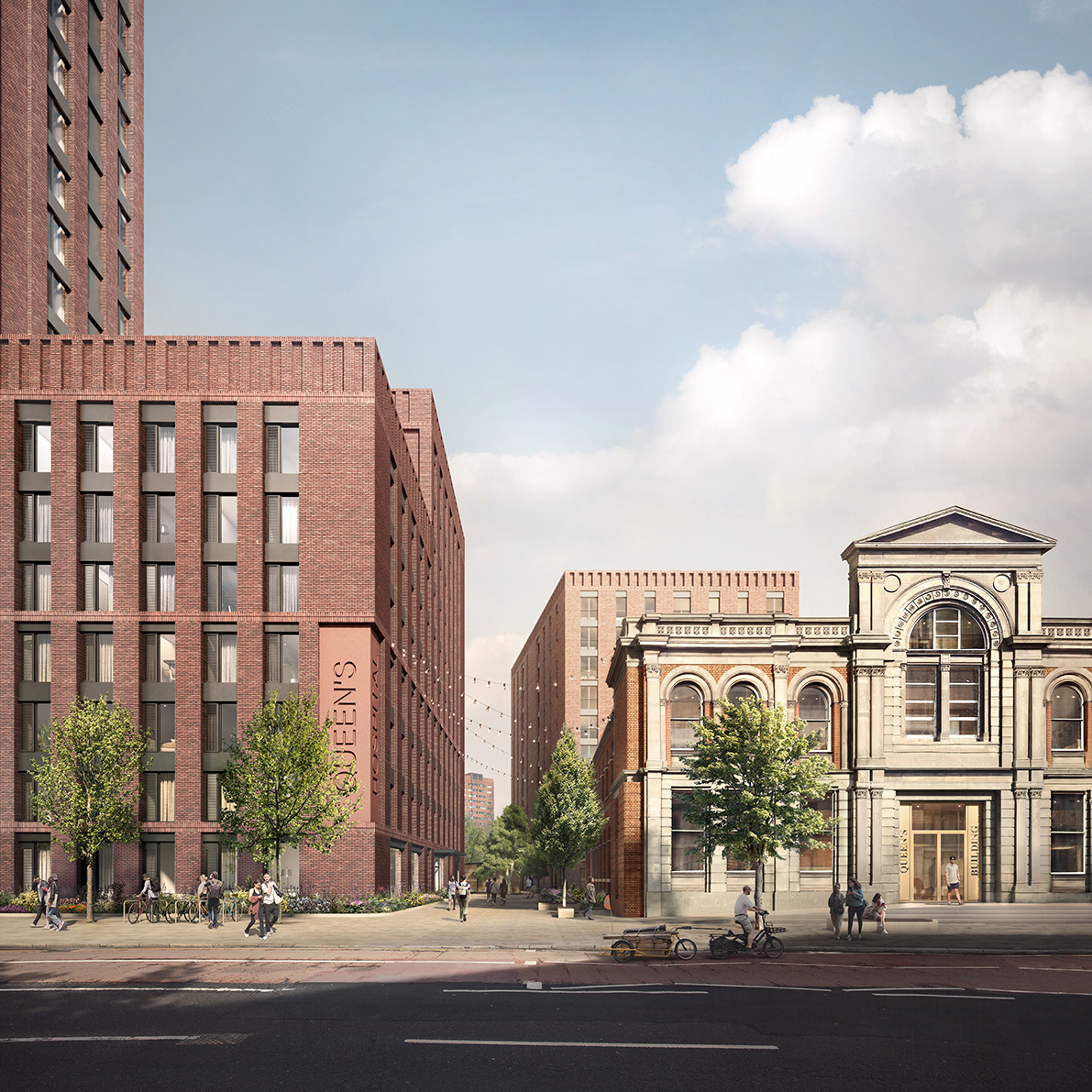What architectural and design trends will sweep the Purpose Built Student Accommodation (PBSA) sector?
Rebecca Ridge from our Bristol studio highlight the priorities for residents and how we meet these priorities in our designs.
Designing Student residences/PBSA is about creating a vibrant, sustainable community. Creating flexible spaces to suit students’ needs. It’s important to be adaptable and keep an eye on trends so that the scheme works successfully for residents now and in the future.
Good design is user-centric, so we need to first understand students’ priorities.
- Sustainability is high on their agenda.
- Well-being is especially important; comfort, health (mental and physical) and happiness.
- A need for human interaction is paramount, as is the provision of pastoral care.
We focus on the residents’ experiences, their relationship with the management team and creating a comforting home-from-home environment. Spaces need to be developed to support human interaction and promote good health.
At Chapman Taylor we’re also in a unique position to be able to look at student accommodation with a holistic view, drawing upon our service-led hotel/hospitality experience. Similarly, with our industry-leading experience of Build-to-Rent, a lot of the trends we are looking at, for example, amenity provision and technology, can be taken forward and be applied to PBSA.
Research tells us that there are some fundamental principles important to get right when designing spaces for student living.
It’s important to develop an identity. One of the first questions a student might get asked is ‘where do you live?’ It’s a good conversation starter. It is therefore important that a student is proud of where they live and they enjoy living there. They can become your biggest brand ambassador. It is also this pride and identity that can help foster a community, which is at the heart of student living.
Space to learn is becoming much more important. Given the rising costs to obtain a University education, students are acutely focused on learning. It may seem obvious, but students need adaptable spaces for study; places that are communal but also places that are quieter so they can engage on a Zoom call, for example. We are also looking at our room typologies and making sure that they are well suited to studying. Thinking back to the pandemic we can all appreciate how challenging it is for someone to sleep, study and relax in the same space! Communal study areas add to the sense of community in the development
Wellbeing and pastoral care should be integral and not an afterthought. Universities are asking us how we are supporting students’ wellbeing. We provide management teams with the best facilities to be able to deliver their service. We try to be clever about bringing traditionally ‘Back of House’ functions to ‘Front of House.’ For example, redefining a launderette as a social/café space. Whilst there is still the need for a divide between front and back of house, we are trying to blur the boundaries a little and redesign those ancillary spaces so they become useful; more than just functional areas.
Front of house/back of house
Digital connectivity is essential. Rooms are frequently keyless and opened by an app. These apps can also do things like turn the heating and lighting off when you leave the room, helping to achieve sustainability targets and counter the challenge of an ‘all inclusive’ mindset .
The importance of sustainability
We can also create a unique selling proposition (USP) for our buildings by creating accommodation that helps residents support their sustainability goals. Environmental, Social, and Governance (ESG) credentials are now at the forefront of conversations and influence all aspects of the design process. In addition to the environmental benefits, it is important that the social benefits to the resident, the brand and the customer experience are not overlooked.
A survey carried out by the National Union of Students of the United Kingdom (NUS-UK) in 2018 focused on expectations for sustainable development in universities. The results showed that 81% of students wanted to know more about sustainable development. Students are now starting to look at these factors when choosing their residence. Apps, as we mentioned above, which are smart and can turn off utilities when not in use, help students to get a handle on their own energy consumption which can, in turn, help them to achieve their sustainability goals.
The Future
The Build-to-Rent market has found success by being user-centric with a focus on customer experience and this is heavily influencing the more mature purpose-built student accommodation (PBSA) sector. We must design from the inside out, creating buildings that can provide for the residents’ needs whilst supporting the management team in their operations.
PBSA is all about providing a nurturing environment that caters to residents’ lifestyles and aligns with their core values.
Good design is user-centric, so we need to first understand students’ priorities.
- Sustainability is high on their agenda.
- Well-being is especially important; comfort, health (mental and physical) and happiness.
- A need for human interaction is paramount, as is the provision of pastoral care.
We focus on the residents’ experiences, their relationship with the management team and creating a comforting home-from-home environment. Spaces need to be developed to support human interaction and promote good health.
At Chapman Taylor we’re also in a unique position to be able to look at student accommodation with a holistic view, drawing upon our service-led hotel/hospitality experience. Similarly, with our industry-leading experience of Build-to-Rent, a lot of the trends we are looking at, for example, amenity provision and technology, can be taken forward and be applied to PBSA.
Research tells us that there are some fundamental principles important to get right when designing spaces for student living.
It’s important to develop an identity. One of the first questions a student might get asked is ‘where do you live?’ It’s a good conversation starter. It is therefore important that a student is proud of where they live and they enjoy living there. They can become your biggest brand ambassador. It is also this pride and identity that can help foster a community, which is at the heart of student living.
Space to learn is becoming much more important. Given the rising costs to obtain a University education, students are acutely focused on learning. It may seem obvious, but students need adaptable spaces for study; places that are communal but also places that are quieter so they can engage on a Zoom call, for example. We are also looking at our room typologies and making sure that they are well suited to studying. Thinking back to the pandemic we can all appreciate how challenging it is for someone to sleep, study and relax in the same space! Communal study areas add to the sense of community in the development.
Wellbeing and pastoral care should be integral and not an afterthought. Universities are asking us how we are supporting students’ wellbeing. We provide management teams with the best facilities to be able to deliver their service. We try to be clever about bringing traditionally ‘Back of House’ functions to ‘Front of House.’ For example, redefining a launderette as a social/café space. Whilst there is still the need for a divide between front and back of house, we are trying to blur the boundaries a little and redesign those ancillary spaces so they become useful; more than just functional areas.
Digital connectivity is essential. Rooms are frequently keyless and opened by an app. These apps can also do things like turn the heating and lighting off when you leave the room, helping to achieve sustainability targets and counter the challenge of an ‘all inclusive’ mindset .
The importance of sustainability
We can also create a unique selling proposition (USP) for our buildings by creating accommodation that helps residents support their sustainability goals. Environmental, Social, and Governance (ESG) credentials are now at the forefront of conversations and influence all aspects of the design process. In addition to the environmental benefits, it is important that the social benefits to the resident, the brand and the customer experience are not overlooked.
A survey carried out by the National Union of Students of the United Kingdom (NUS-UK) in 2018 focused on expectations for sustainable development in universities. The results showed that 81% of students wanted to know more about sustainable development. Students are now starting to look at these factors when choosing their residence. Apps, as we mentioned above, which are smart and can turn off utilities when not in use, help students to get a handle on their own energy consumption which can, in turn, help them to achieve their sustainability goals.
The Future
The Build-to-Rent market has found success by being user-centric with a focus on customer experience and this is heavily influencing the more mature purpose-built student accommodation (PBSA) sector. We must design from the inside out, creating buildings that can provide for the residents’ needs whilst supporting the management team in their operations.
PBSA is all about providing a nurturing environment that caters to residents’ lifestyles and aligns with their core values.
